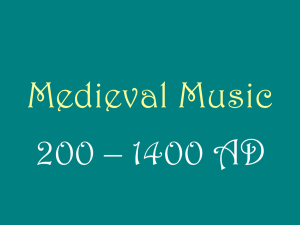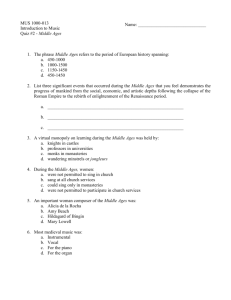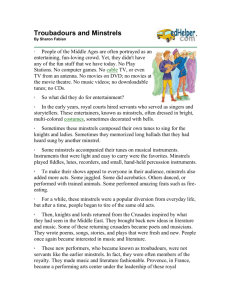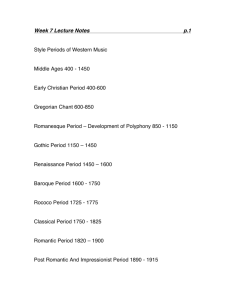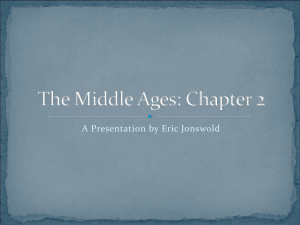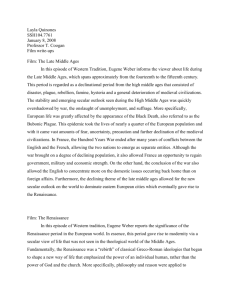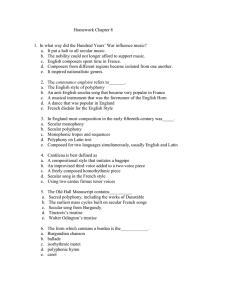Music culture Middle Ages (400-1400) During the Middle Ages
advertisement
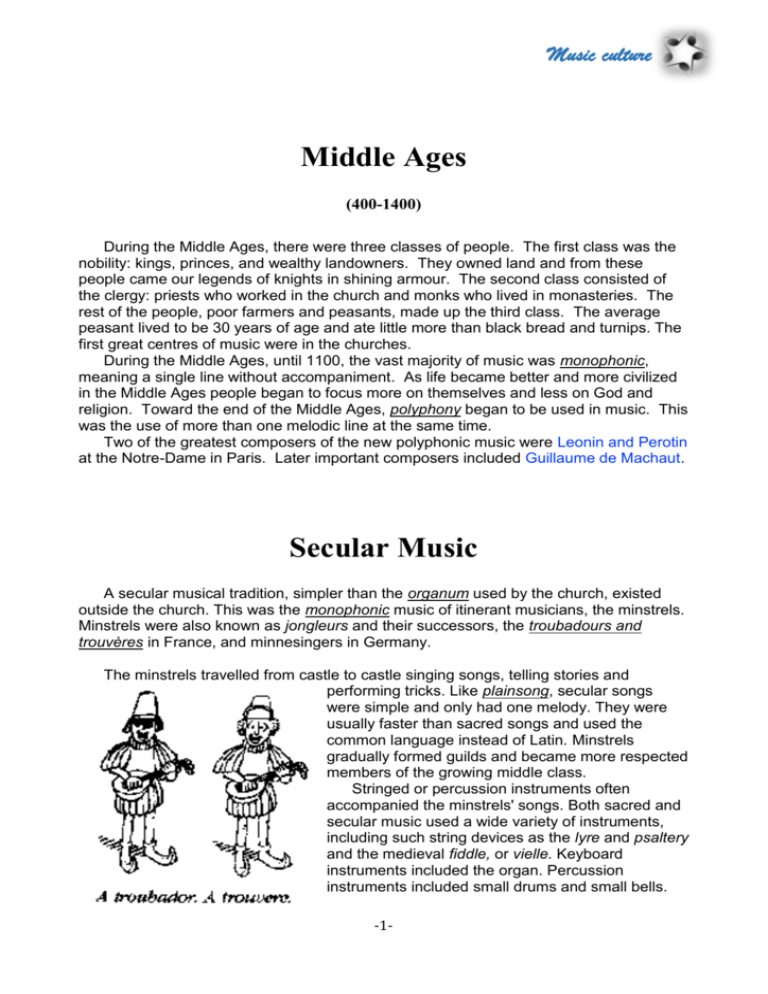
Music culture Middle Ages (400-1400) During the Middle Ages, there were three classes of people. The first class was the nobility: kings, princes, and wealthy landowners. They owned land and from these people came our legends of knights in shining armour. The second class consisted of the clergy: priests who worked in the church and monks who lived in monasteries. The rest of the people, poor farmers and peasants, made up the third class. The average peasant lived to be 30 years of age and ate little more than black bread and turnips. The first great centres of music were in the churches. During the Middle Ages, until 1100, the vast majority of music was monophonic, meaning a single line without accompaniment. As life became better and more civilized in the Middle Ages people began to focus more on themselves and less on God and religion. Toward the end of the Middle Ages, polyphony began to be used in music. This was the use of more than one melodic line at the same time. Two of the greatest composers of the new polyphonic music were Leonin and Perotin at the Notre-Dame in Paris. Later important composers included Guillaume de Machaut. Secular Music A secular musical tradition, simpler than the organum used by the church, existed outside the church. This was the monophonic music of itinerant musicians, the minstrels. Minstrels were also known as jongleurs and their successors, the troubadours and trouvères in France, and minnesingers in Germany. The minstrels travelled from castle to castle singing songs, telling stories and performing tricks. Like plainsong, secular songs were simple and only had one melody. They were usually faster than sacred songs and used the common language instead of Latin. Minstrels gradually formed guilds and became more respected members of the growing middle class. Stringed or percussion instruments often accompanied the minstrels' songs. Both sacred and secular music used a wide variety of instruments, including such string devices as the lyre and psaltery and the medieval fiddle, or vielle. Keyboard instruments included the organ. Percussion instruments included small drums and small bells. -1- Music culture Sacred Music Sacred music was called plainsong, and it consisted of a single unaccompanied melody with words in the Latin language. The melody of plainsong was simple so the words would be easily understood by others. The words were usually part of the Roman Catholic mass. The majority of the music of the time is now known as Gregorian Chant, named after Pope Gregory I (590-604), who organized the plainsong chants into a specific order and had them published and communicated to churches throughout Europe and the Roman Empire. Music Printing Since the printing press had not yet been invented, if a piece of music was to be retained , it would have to be copied out by monks, diligently writing out music for church services. Sometimes the music was written out in a very ornamented fashion. Around 1025, Guido d'Arezzo developed a system of pitch notation using lines and spaces. Until this time, only two lines had been used. Guido expanded this system to four lines, and initiated the idea of ledger lines by adding lines above or below these lines as needed. He used square notes called neumes. This system eliminated any uncertainty of pitch, which had existed until this time. Guido also developed a system of clefs, which became the basis for our clef system: bass clef, treble clef, and so on. -2- Music culture Middle Ages Quiz 1. What is the name of the style of music that is only one melody and easy to understand? o polyphony o plainsong o secular 2. Machaut, besides being a great composer, was also a great... o poet o artist o architect 3. Who wrote music out by hand? o peasants o princes o monks -3-
